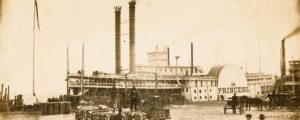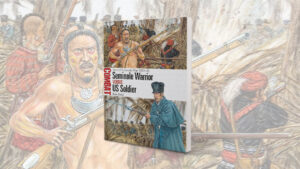
To say that clothes make the fighting man or woman would be an overstatement, yet military history has given us a number of terms related to clothing. An earlier column described some of these terms dating from the 19th century. Here are both older and newer terms.
Our lexicographer considers words suited for military garb.
Turncoat, one of the earliest military clothing terms, first appeared in English in the mid-1500s but alluded to a presumably much older practice. According to legend, a duke of Saxony, whose castle lay between French and Saxon territory, had a reversible coat made of blue, the Saxon color, and lined with white, the French color. The side he wore facing out depended on which monarch he needed to appease at the time. Originally referred to by the French tourne-côte (turn side), the term was first Anglicized in Scots’ Magazine in 1747. The idea was soon applied figuratively to anyone who changes sides, whether in the military or in politics, as it is today. The term was recently applied to Senator Arlen Specter of Pennsylvania, who abandoned the Republican Party to become a Democrat.
Also from the 16th century is the noun panache, today meaning great verve or swagger. It originally was the name for a plume of feathers ornamenting a military helmet. Late in the 1800s, it acquired its current figurative meaning.
The noun cravat, for a necktie, originated in the 17th century during the Thirty Years’ War. During this conflict, Croatian troops came to Paris dressed for battle with bright-colored scarves tied tightly around their necks. The fashion-conscious French adopted the style as a new civilian mode, looping the scarves more loosely and tying them with a bow with long flowing ends. They called it la Croate, which was then turned into la cravate. In the mid-1600s the name entered English, where it now means a scarf or other band of fabric worn around the neck, principally by men.
A style of headgear favored in the 19th century, first in the French army and later by American colonists, was the tricorn hat. A hat with the brim turned up on three sides, it has not remained a popular civilian fashion. Still, the name survived in an old children’s song beginning, “My hat it has three corners / Three corners has my hat….” In history-conscious Lexington, Massachusetts, your columnist once lived on a street named Tricorne Road.
Navies also had unique items of apparel. Both British and American sailors sported bell-bottom trousers, widely flared at the bottom. In Britain, they were introduced in 1857 to allow sailors to kick them off readily if they fell into the sea. Worn by sailors only, not officers, they were redesigned with a more modest flare in the late 1970s and then abandoned entirely in 1994. At about the same time, the U.S. Navy announced bell-bottoms were to be discontinued, replaced by straight-leg pants. In the American navy, the original rationale was that the wide-bottomed legs could easily be rolled up and kept dry when sailors scrubbed the decks. They were immortalized in the World War II song “Bell Bottom Trousers,” which became a huge popular success in 1945. Today some styles of blue jeans are fashioned with similarly flared legs.
Two World War II styles became popular in civilian life after the war. Both were first sold by military surplus stores and were later imitated by designers. The Royal Navy wore short duffel coats made of heavy natural wool from Duffel, Belgium, and fastened with toggles. American sailors wore pea jackets, hip-length double-breasted coats with notched lapels. Both styles are current in civilian life.
Another military style adopted by civilians, in the 1960s, was fatigues, loose uniforms worn as work clothes. As early as the 1770s, during the American Revolution, such dress was to be used for noncombat duties, such as digging ditches, called “fatigue duty.” These work clothes were worn in both the British and American armies. Much later, Fidel Castro’s loose work clothes became popular with civilians, especially among young people. Many also adopted combat boots, infantry footwear consisting of front-laced boots, covering at least the ankles, with thick rubber soles.
The newest of these terms is battle rattle, originating in the first Gulf War. It denotes the noisy gear, including both clothing and weapons, worn or carried by military personnel in preparation for enemy contact. A 1995 article in the Boston Globe had it: “The main gate…was secured by at least six American paratroopers and military police in full combat regalia, heavy body armor and helmets—battle rattle, as they call it.” Whether this will survive or enter civilian vocabulary is not yet known.
MHQ





